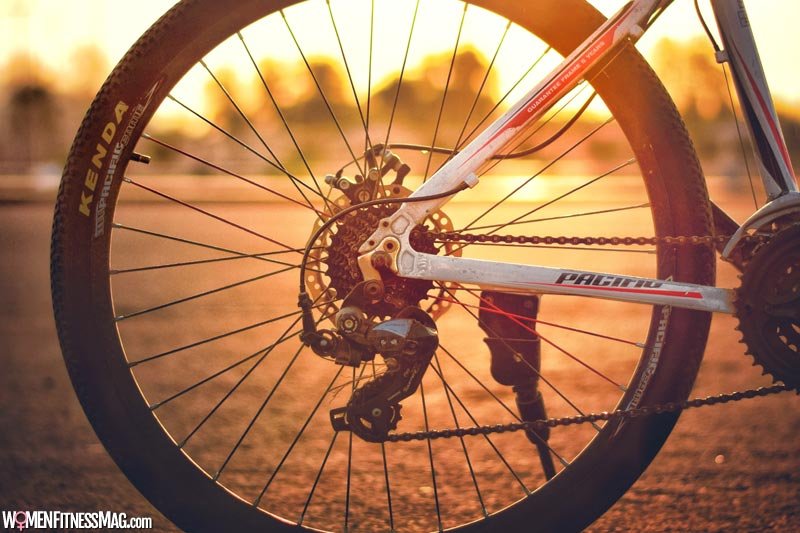Bicycle Bearing: What Is It? And How To Maintain Them? For a smooth run and fine turning, the most important metallic part is the bearing. Perfectly maintained ball-bearing is as essential as our joint. Like our joints allow turning in different directions, bike bearings do the same job.
Bicycle bearing is present in all the moveable parts like a wheel, pedal headset, and others to ensure that the bicycle turns smoothly at high speed.
In this guide, we will explain to you the different types of bearing and how you can maintain it to make your journey swift and easy.
What is bicycle bearing?
A bearing is a metallic ball placed between the two moveable parts to reduce friction and helps in the rotation of the bike.
After knowing the function, it is easy to understand where it is found. The key areas where the bearing reduces friction include the wheel hub, padel, front headset, and suspension pivot.
These bearings are available in different shapes and sizes. The range of the size of ball bearing is 2.281mm to 6.35mm.
The bicycle bearing should not be so soft or so hard. The bearing of optimal hardness 55 to 65 HRC is perfect, and it will not damage the internal cone.
Different metals are used in the composition of it that include stainless steel, ceramic, plastic. Chrome steel is also used to make durable bike bearings, but it can not resist corrosion. In the place where the corrosion-resistant bike bearing is needed, stainless steel is used.
What are the types of bicycle bearing?
There are several types of bearings that are used in mountain and road bikes. Each type of bearing is found in a different part to function according to the requirement of that part.
Here we discussed each type in detail so you will learn how to and where to use it.
Cartridge bicycle bearing
The cartridge is extensively used in mountain bike bearings that can be used from the top front headset to the bottom bracket and in other parts. The four portions of cartridge bearing are:
- The inner and outer race
- The retainer that keeps the ball in place or holds them
- Ball to reduce the friction and
- A seal to save the interior parts.
Although the cartridge contains a rubber seal at the top that can not be disassembled, it is necessary to clean it. This bearing has proved super-efficient performance in hub, bottom bracket, and frames. There are some other best bike bearings, but they are the cheapest of them all.
Loose or Cup and cone bicycle bearing
Loose bearings are simple ball bearings that are directly inserted between two racers to lessen friction. If we talk about loose bearing, this means there is no retainer to hold the ball, but the cup and cone bearing has a cup shape holder. The cone of the cup and cone bearing press the balls in the cup, thus preventing the dislocation of balls.
To keep your bike in a perfect state, you need to lubricate the cup and cone regularly. This cup and cone bearing has a longer life if the ball is replaced frequently.
Needle bicycle bearing
Needle bearing, also known as roller bearing, is the less common type. In this bearing, instead of a circular ball bearing, small cylinders or rollers are used to reduce friction and to make the part easily turnable.
The only reason for its low familiarity is its cost which is very high due to its design. Needle bearing can handle large amounts of load due to its larger surface area. It shows the best performance in the headset and pedals.
Ceramic bicycle bearing
The ceramic bearing is introduced to make the ball-bearing more efficient. It can run smoothly with low rolling resistance. In ceramic bearings, the balls and seals are manufactured from ceramic instead of steel. Due to its composition, this bearing is lighter in weight.
The ceramic bike bearing is used in wheel hubs, and it gives the bicycle high speed. Due to its composing material, it does not need regular maintenance. Lubrication increases longevity and performance.
How can I maintain bicycle bearing?
Like any other parts, bicycle bearings also need maintenance and proper care. If you care for the lubrication of the ball or cylinder and outer seal, it will increase its life.
Improperly placed bearings increase the chances of wear and also affect the functioning of the bicycle. Use fresh grease or oil to lubricate the bearing and clean it frequently. Dust in the bearing increases the friction, so it could not handle the load properly.
If the bicycle is not giving good performance even after lubrication, and cleaning, replace it. Changing your bike bearing does not need too much expertise, so to increase the longevity of the bicycle, replace the damaged bearing as early as possible.
Conclusion
Bicycle bearing is a small, rather important part of the road or mountain bike. It gives the two joints of the bicycle a smoother turning. There are many types of bearing, and every type is best for different parts like roller bearing is not so common, but it works efficiently in the headset.
Related Videos about Bicycle Bearing: What Is It? And How To Maintain Them? :
How To Service Your Bearings | Mountain Bike Maintenance
How Do Bearings Work? | Bike Bearing Teardown
How to Grease Bike Wheel Bearings
Bicycle Bearing: What Is It? And How To Maintain Them?
bicycle wheel bearings maintenance, bicycle bearings sizes, how to tell if bike bearings are bad, bicycle rear wheel bearings loose, cycle bearing price, bicycle wheel bearings, cartridge, bicycle bearing size chart, bicycle ball bearings,




